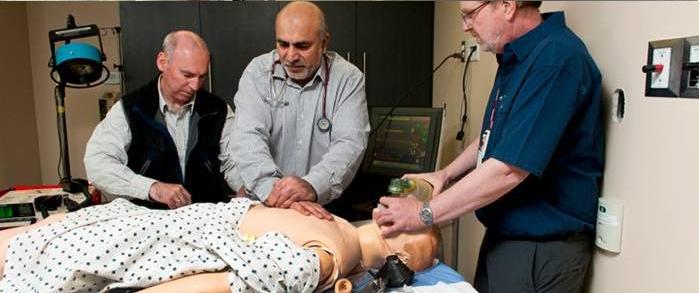
The purpose of patient simulations is to reduce risk and discomfort for real-life patients by providing initial training for healthcare professionals in a simulated environment. Patient simulations can range greatly both in realism and in reliance on technology. While a major area of focus for the BC Simulation Technology Working Group (BC STWG) is on facilities supporting patient simulation mannequins, many other modes of simulation exist, including but not limited to:
- The use of standardized patients
- Practicing medical procedures on a human cadaver
- Learning suturing techniques using a banana
- Practicing a procedure (e.g. colonoscopy) using a specialized task training device
Because patient simulation mannequin facilities are more expensive to implement than facilities for other modes of simulation, curricular requirements must be well-defined and sufficient to justify the added cost of employing patient simulation mannequins. Patient simulation mannequin facilities are especially suited for teaching real-time decision making, in addition to learning outcomes achieved with other forms of simulation, such as task training or bedside manner.